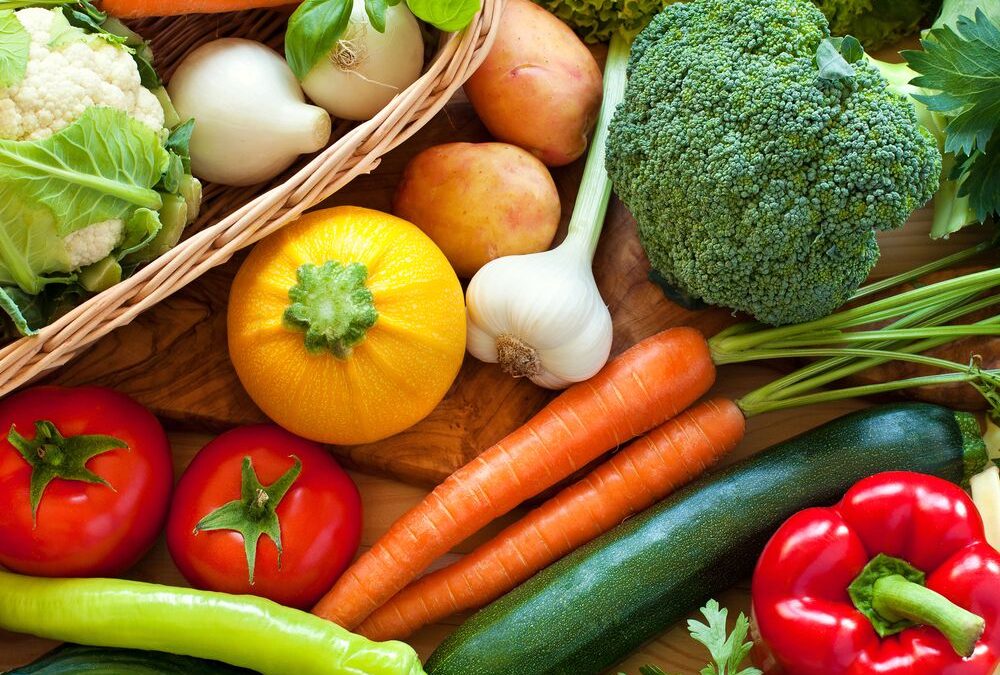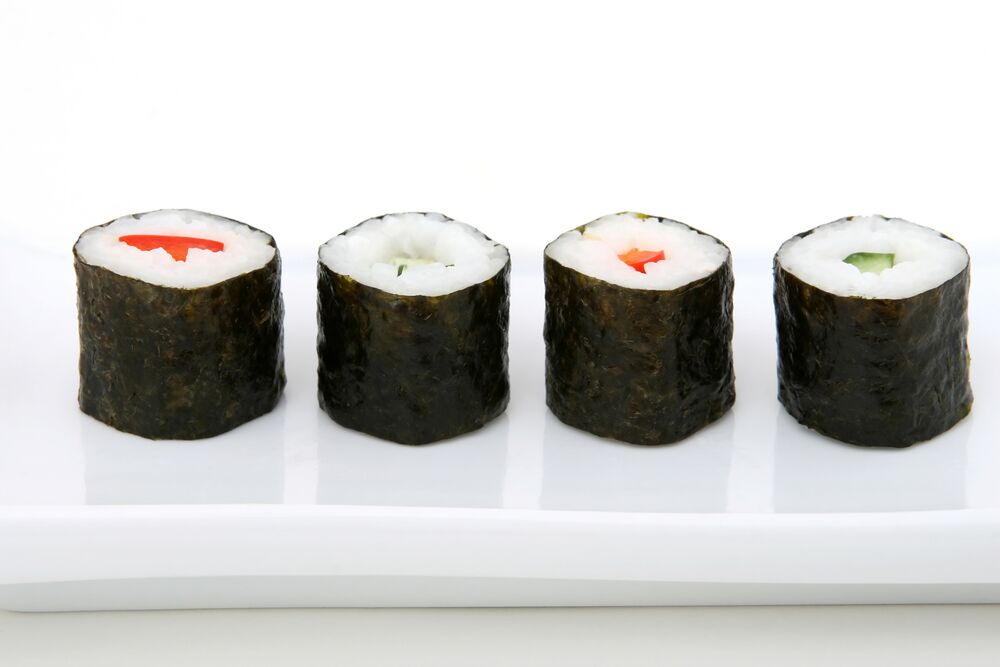
Sep 20, 2022 | Natural Diets
The Utah Diet came to be in the town of Moab, Utah and is a fad diet through and through. This is an extremely eclectic little town and has been followed by the people who live there and in its surrounding area. Essentially, it is a form of organic eating program that is extremely difficult to try to follow unless you live within the area or are willing to try to make a number of considerable changes to the way that you live your life.
(more…)

Feb 27, 2022 | Low Carb Diets, Natural Diets
The Raw Food Diet is pretty much what it sounds like: eating your foods without cooking them. This strategy involves eating primarily raw vegetables, fruits and grains. The reason behind avoiding cooking is that the heat can break down many of the natural enzymes and nutrients contained within the foods.
(more…)

Aug 15, 2021 | Mixed/Balanced Diets, Natural Diets
The Mediterranean Diet is an eating strategy that has received a considerable amount of attention from the scientific community and the media. It is praised as a heart healthy eating plan that also comes with a range of additional potential advantages such as the potential for weight loss.
(more…)

Aug 7, 2020 | Low Fat Diets, Natural Diets
The Traditional Asian Diet is a lifestyle-based eating strategy based mainly on eating plant-based foods as is popular in several Asian countries. That massive continent is home for many countries, each of which boasts its own rich cultures and eating traditions. For this particular diet, there is a main focus on Japanese and certain Chinese diets.
Why Are Forms of the Traditional Asian Diet Praised?
The reason is that those cultures typically see strong health and considerable longevity throughout their populations. That said, they also typically consume about 25 percent more calories than the average American and yet still maintain leaner bodies on the whole. When eating the traditional Asian Diet as a part of a lifestyle, obesity is quite rare. That said, it has become commonplace among people who follow the traditional western and American diet high in processed foods.
How to Eat According to These Type of Diets
The diet involves eating a lot of rice as well as vegetables which have typically been cooked. Also included in the diet are a number of pulses, particularly soy-based foods. Soy provides one of the primary protein sources, to the point that it is even more commonplace than animal-based protein sources. Sweets and red meat are considered to be indulgences to be enjoyed on a rare occasion, not a regular basis.
Protein, Healthy Fats, Fruits and Veggies
In following with the Japanese tradition, seafood is also a regular protein source. As is the case in many parts of China, rice wine is often used in cooking, but this is still used only in moderation as alcohol is not meant to be a regular component of the lifestyle.
The Traditional Asian Diet leans on the eastern food pyramid. That food pyramid is extremely different from the one with which the western world is familiar. Instead, meat is at the very top of the Asian pyramid because it is eaten only occasionally and in small amounts. Poultry is eaten more, while eggs are consumed much more frequently. Vegetables, fruits, seeds, nuts and legumes are eaten quite a bit on this diet.
Lots of Rice
That said, the food eaten the most is rice, followed by certain millets and corn. The preferred type of rice when following this diet is white rice, not brown unpolished rice. The reason is that rice bran can be difficult to digest and it is believed to slow the metabolism.
High in Carbs
While the Traditional Asian Diet may be high in carbohydrates, the foods are consumed in their healthy, natural forms, meaning that they don’t cause people who eat them to become overweight or obese. These foods are not processed and don’t contain unhealthy additives. Their nutrient density helps to keep weight and health more naturally under control.
At the same time, there isn’t a great deal of scientific evidence to support adopting this diet outside of living within the actual culture that created it. As there isn’t any food tracking, specific restrictions or calorie counting, it can be difficult to adopt in a natural way that reflects the way the diet is consumed in the Asian countries on which the diet was based.
Interesting Strategies for Following a Traditional Asian Diet
To follow a traditional Asian diet in general, there are certain strategies that you can add to your habits. Indeed, every eating habit in Asia is unique to its region, but there are some points that most have in common
Avoid Cold Drinks with Meals
In the United States, it is extremely commonplace to have a cold beverage along with your meal. This can include anything from a cold glass of water to milk, soda, white wine, beer, or other drinks. That said, this is not the habit of people following a traditional Asian Diet. Many people believe that changing this habit is a healthy move. Reducing the intake of fluids with meals helps to avoid watering down your digestive enzymes and acids which are critical to ideal nutrient absorption.
That said, room temperature or, more commonly, warm beverages such as green tea help to support digestive enzymatic activity. This helps you to stay hydrated and potentially improve your digestion at the same time. That said, enjoy your green tea a half hour before or after eating, not during your meal, according to a typical traditional Asian diet.
Make Soup a Regular Meal
Soup is a hydrating food that helps to fill you up without packing yourself with calories. Many traditional Asian diet habits include soup with many if not most meals. They should be a broth-based, not cream-based soup. Like green tea, many of these meals support the digestive process.
Use Chopsticks and Small Plates
Serving the dishes that make up your meals on small plates is a fantastic way to eat smaller portions. Choose one smaller plate for your whole meal or use very small plates to contain your portion of each part of the meal. Chopsticks are also a great way to eat because they help to ensure you take a reasonable sized bite instead of shoveling huge amounts into your mouth. This slows down the pace of your eating and gives your stomach the chance to register to your brain that it’s full before you overeat.

May 19, 2020 | Natural Diets
I F weight loss has become a tremendously popular over the last handful of years. In fact, it has become one of the trendiest eating strategies. That said, there have been dozens – if not hundreds – of highly popular fads and strategies in the name of shedding extra pounds. Popularity can’t be the top test of whether or not something is appropriate for you. Therefore, it’s a good idea to take a much closer look at what it’s all about and whether or not it has the potential to be safe and effective for you.
Let’s look more closely at what an I F weight loss diet is all about.
What is an I F Weight Loss Diet?
An I F weight loss diet stands for intermittent fasting. This means that it alternates between periods of eating normally and brief periods in which no food or calorie-containing beverages are consumed. This isn’t a single type of program. Instead, it is a way of eating that can be interpreted in many different ways.
There are lots of different types of I F weight loss diet programs. While some restrict hours of the day, others restrict days of the week. Some are more extreme, requiring several consecutive days of eating very little or nothing at all. Typically speaking, those are not considered to be the main form of intermittent fasting strategy.
Which Types of Intermittent Fasting Are Most Popular?
There are a handful of I F weight loss diet that are popular at the moment. The majority involve eating food only during a limited window of the day. Often, it requires a ratio of something similar to 16 hours of fasting and 8 hours in which eating is permitted per day. That said, others are more or less restrictive than that ratio.
Moreover, while some I F weight loss diets allow you to eat virtually anything during your permitted window of time, others require you to stick to a certain calorie limit, macronutrient ratio or other types of eating restriction.
Some people find this method very helpful and can lose weight efficiently when using it. It is important to point out that it is not safe for everyone. Many very common medical conditions can make this type of eating strategy inappropriate and unsafe. Therefore, it’s extremely wise to speak with your doctor before assuming that I F weight loss is right for you.

Feb 25, 2020 | Mixed/Balanced Diets, Natural Diets
The MIND Diet is a combination of two proven and popular diets: Mediterranean Diet and DASH. It was designed to focus specifically on the foods from those eating strategies that are known to support brain health. Initial research into this form of dieting suggests that it could have the potential to support brain wellness and reduce the risk of mental decline.
As there have yet to be any methods of fully preventing or reversing dementia or Alzheimer’s, the hope is to be able to use MIND Diet strategies to make as big of a difference based on lifestyle as possible.
Does the MIND Diet Work?
The idea behind the MIND Diet is to eat foods such as nuts, berries, and leafy greens to reduce a person’s risk of developing a progressive brain disorder. The letters in the name of this eating strategy stand for Mediterranean-DASH Intervention for Neurodegenerative Delay. It was first developed by Rush University Medical Center nutritional epidemiologist Martha Clare Morris.
The development of the MIND Diet was funded by the National Institute on Aging. The first published version of this eating strategy was in February 2015. The research determined that eating in this way decreased the risk of Alzheimer’s development by about 35 percent among people who followed it moderately well. That said, among those who followed it quite rigorously, there as a 53 percent drop in Alzheimer’s risk.
More research is needed to know precisely what long-term impact following the MIND Diet can have. Still, the same research team has done more study into this eating plan and has found that its impact on preventing cognitive decline is better than both the DASH and Mediterranean Diets on their own.
Not a Dieting Plan Specifically for Weight Loss
Though the MIND Diet is considered to be very healthy, it is not necessarily a plan for weight reduction. That said, many people who have followed this eating program have found that their weight has been easier to manage. Its focus on whole grains, vegetables – particularly dark green ones – nuts, beans, lean proteins, healthy fats such as olive oil, and other nutrient dense foods helps to avoid empty calories and foods that are less satisfying. In fact, it recommends avoiding highly sugary and processed fatty foods.
Before switching to the MIND Diet, it’s a good idea to speak with your doctor. This can help you to know that it will be appropriate for you and will assist you in finding the right guidance to follow to do it properly, particularly at the start as you familiarize yourself with it.






